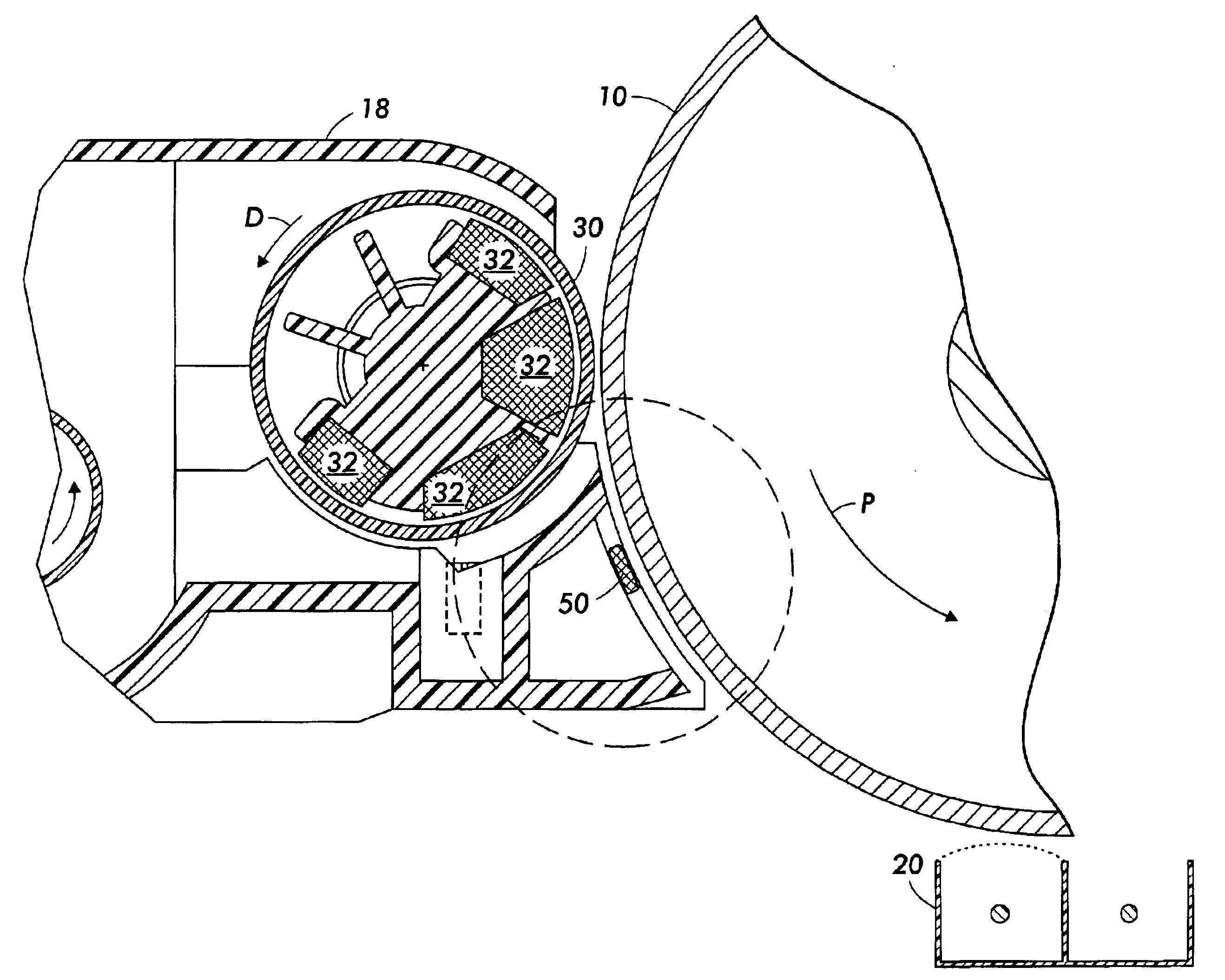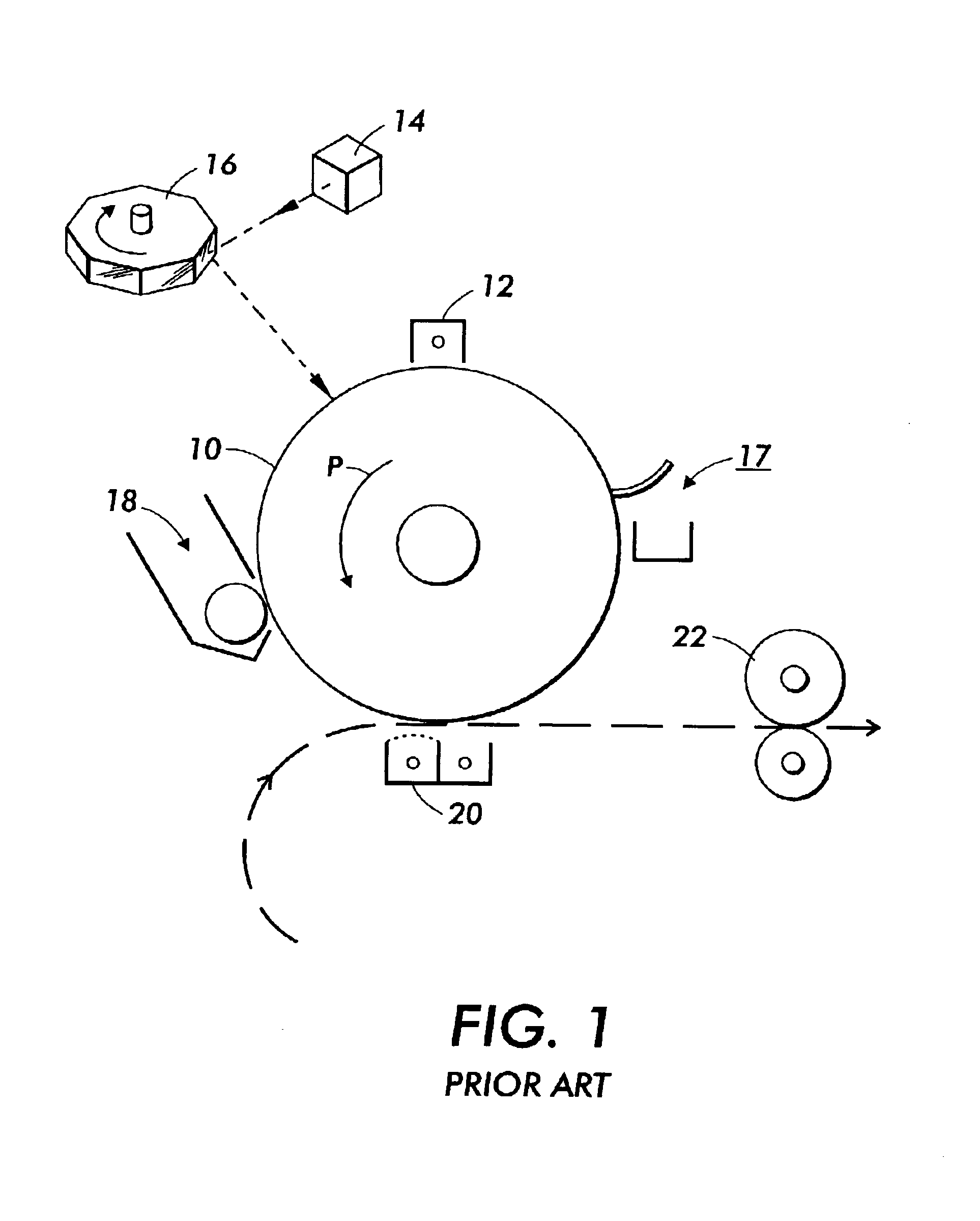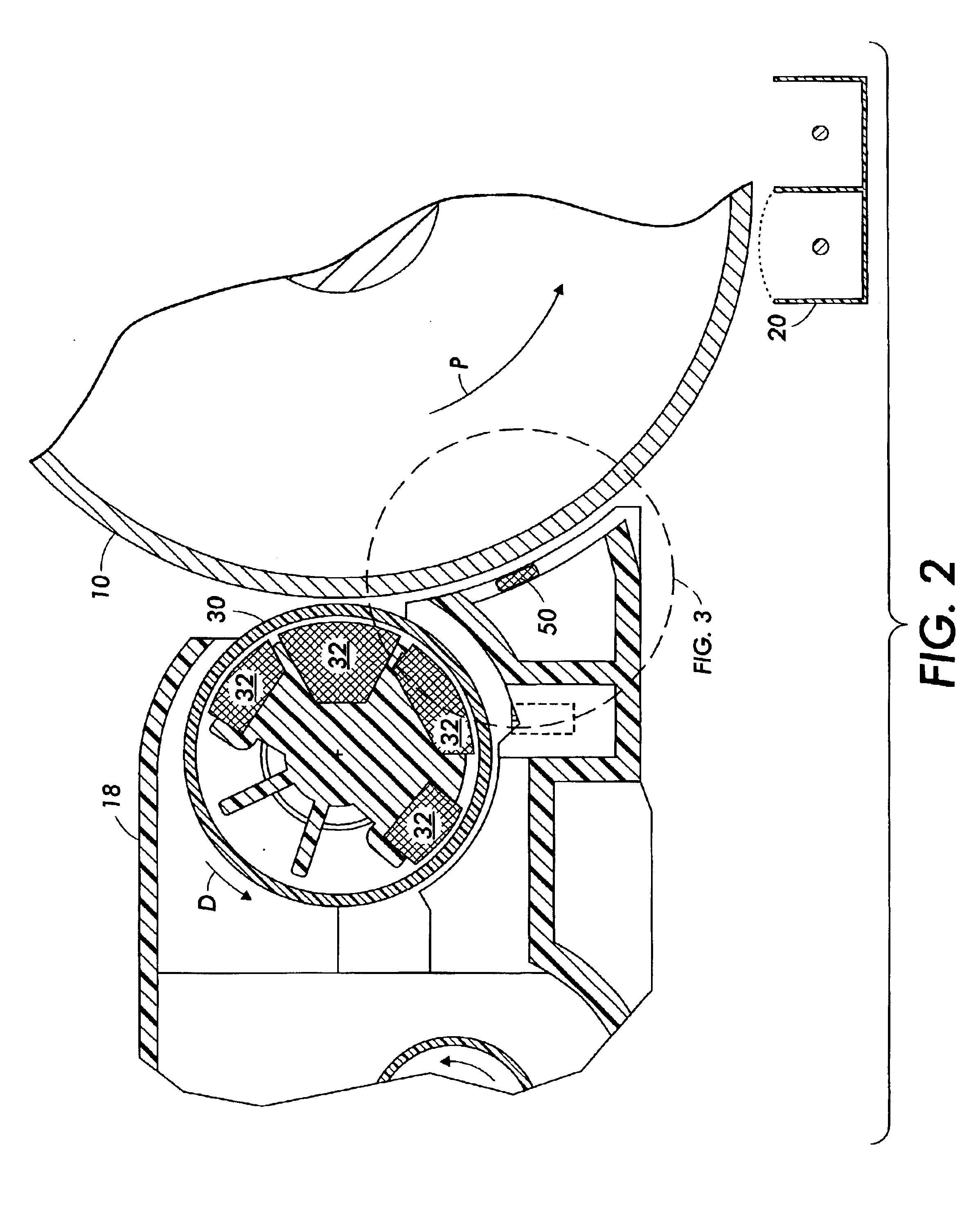Xerographic printing system with magnetic seal between development and transfer
- Summary
- Abstract
- Description
- Claims
- Application Information
AI Technical Summary
Problems solved by technology
Method used
Image
Examples
Embodiment Construction
FIG. 1 shows the basic elements by which a electrostatographic or xerographic printer, such as a copier or a “laser printer,” creates a dry-toner image on plain paper. There is provided in the printer a charge receptor such as photoreceptor 10, which may be in the form of a belt or drum, and which defines a charge-retentive surface for forming electrostatic images thereon. The photoreceptor 10 is caused to rotate through process direction P.
The first step in the process is the general charging of the relevant photoreceptor surface. This initial charging is performed by a charge source such as a “scorotron,” indicated as 12. The scorotron 12 typically includes an ion-generating structure, such as a hot wire, to impart an electrostatic charge on the surface of the photoreceptor 10 moving past it. The charged portions of the photoreceptor 10 are then selectively discharged in a configuration corresponding to the desired image to be printed, by a raster output scanner or ROS, which gene...
PUM
 Login to View More
Login to View More Abstract
Description
Claims
Application Information
 Login to View More
Login to View More - R&D
- Intellectual Property
- Life Sciences
- Materials
- Tech Scout
- Unparalleled Data Quality
- Higher Quality Content
- 60% Fewer Hallucinations
Browse by: Latest US Patents, China's latest patents, Technical Efficacy Thesaurus, Application Domain, Technology Topic, Popular Technical Reports.
© 2025 PatSnap. All rights reserved.Legal|Privacy policy|Modern Slavery Act Transparency Statement|Sitemap|About US| Contact US: help@patsnap.com



